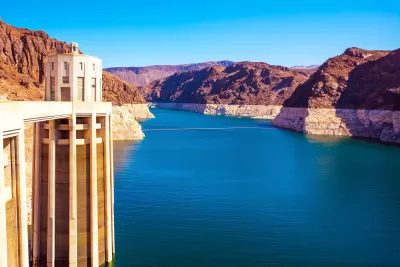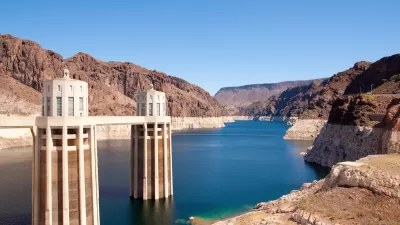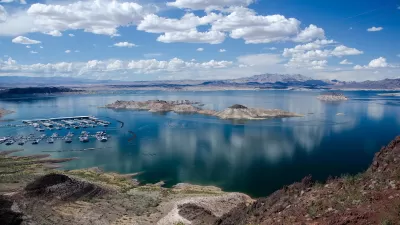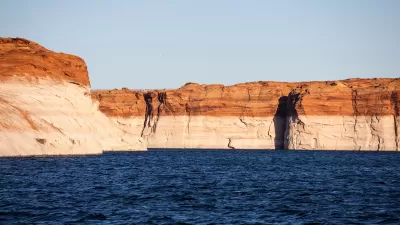According to one analyst, the agreement approved by the states doesn’t go nearly far enough to protect the river in the long term.

Writing in The Land Desk, Jonathan P. Thompson provides an analysis of the newly revealed Colorado River agreement, which, while historic, “won’t be enough to save the Colorado River if the climatic conditions of the last couple decades persist or worsen.”
Thompson provides a history of the Colorado River Compact, which divides up the river’s resources between Upper and Lower Basin states and, later, Mexico. But the allocations in the compact never matched real water supplies. With populations in the west growing rapidly, the water debt that has been embedded in river policy from the beginning is becoming too severe to be ignored.
Although details of the plan are still hazy, the known points are: “The Lower Basin states together will cut consumption by 3 million acre-feet over the 2023-2026 period, with at least 1.5 million acre-feet in cuts coming by the end of 2024,” and “Up to 2.3 million acre-feet of those cuts will be federally compensated by about $1.2 billion in Inflation Reduction Act funds.”
The problem, Thompson writes, is that the promised cuts are just half of the minimum amount required to support the river and its reservoirs, according to the federal government. And, as Thompson points out, the deal only covers the next few years. “What then?”
FULL STORY: The breakdown on the Colorado River ‘breakthrough’ water deal

Study: Maui’s Plan to Convert Vacation Rentals to Long-Term Housing Could Cause Nearly $1 Billion Economic Loss
The plan would reduce visitor accommodation by 25,% resulting in 1,900 jobs lost.

North Texas Transit Leaders Tout Benefits of TOD for Growing Region
At a summit focused on transit-oriented development, policymakers discussed how North Texas’ expanded light rail system can serve as a tool for economic growth.

Using Old Oil and Gas Wells for Green Energy Storage
Penn State researchers have found that repurposing abandoned oil and gas wells for geothermal-assisted compressed-air energy storage can boost efficiency, reduce environmental risks, and support clean energy and job transitions.

Private Donations Propel Early Restoration of Palisades Playground
Los Angeles has secured over $1.3 million in private funding to restore the Pacific Palisades playground months ahead of schedule, creating a modern, accessible space that supports community healing after recent wildfires.

From Blight to Benefit: Early Results From California’s Equitable Cleanup Program
The Equitable Community Revitalization Grant (ECRG) program is reshaping brownfield redevelopment by prioritizing projects in low-income and environmental justice communities, emphasizing equity, transparency, and community benefits.

Planting Relief: Tackling Las Vegas Heat One Tree at a Time
Nevada Plants, a Las Vegas-based nonprofit, is combating the city’s extreme urban heat by giving away trees to residents in underserved neighborhoods, promoting shade, sustainability, and community health.
Urban Design for Planners 1: Software Tools
This six-course series explores essential urban design concepts using open source software and equips planners with the tools they need to participate fully in the urban design process.
Planning for Universal Design
Learn the tools for implementing Universal Design in planning regulations.
Ascent Environmental
Borough of Carlisle
Institute for Housing and Urban Development Studies (IHS)
City of Grandview
Harvard GSD Executive Education
Toledo-Lucas County Plan Commissions
Salt Lake City
NYU Wagner Graduate School of Public Service





























